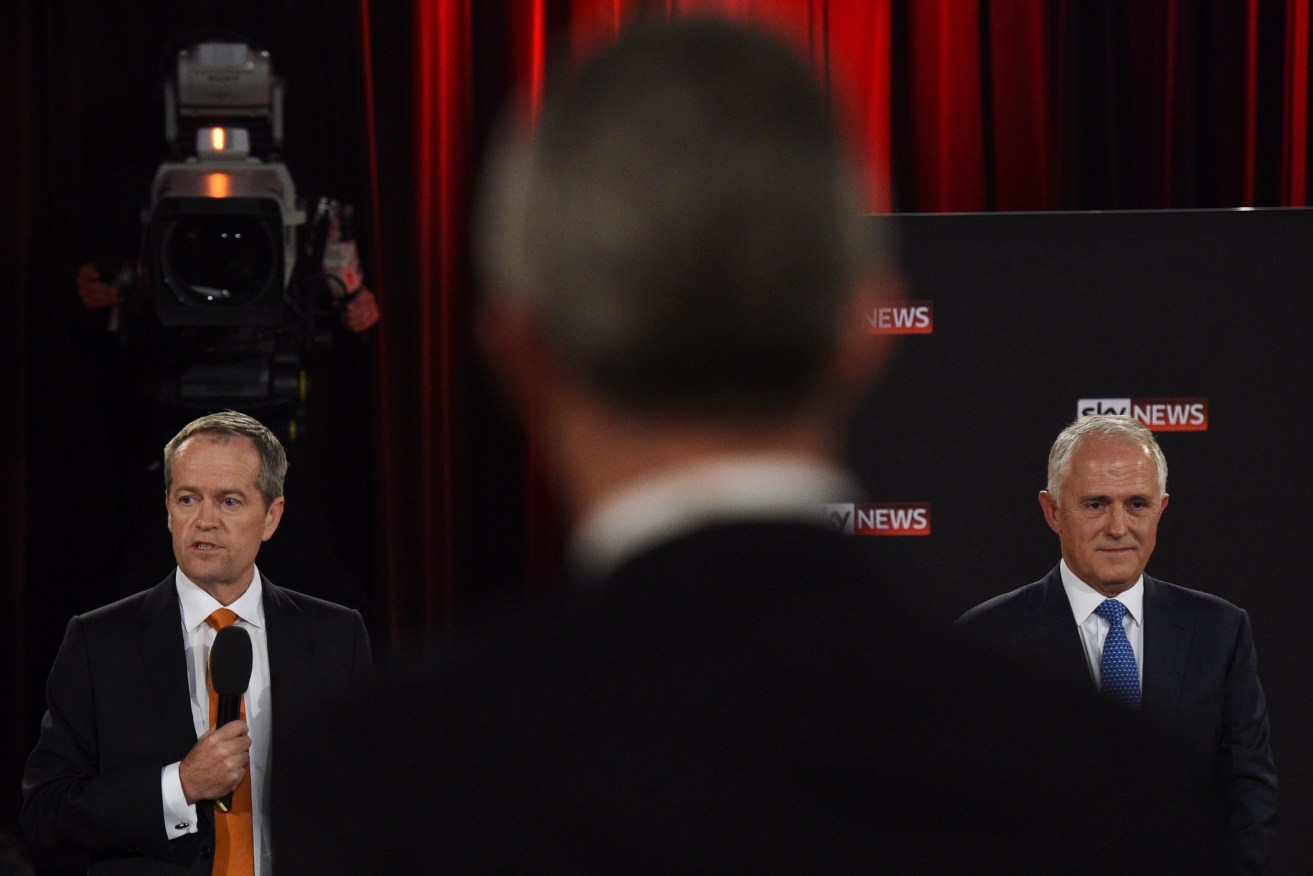Election at half-time, and the stands are empty
The half-time whistle has been blown. But the crowd hasn’t turned up yet and the pies are still frozen.

Bill Shorten and Malcolm Turnbull are talking, but is anyone listening? Photo: AAP/Mick Tsikas
Malcolm Turnbull kicked off the second-longest election campaign on May 8.
Only Bob Menzies in 1954 forced the country to endure a longer match – an epic 94 days.
Nationals leader Barnaby Joyce put the point well when he said at the outset: “It is going to absolutely knock the stuffing out of all of us. It is going to infuriate, bore, send people crazy, ultimately.”
Halfway along, if you ask the average voter they’ll say one of two things: they haven’t yet tuned in to the campaign, and if they have, they can’t see much difference between Turnbull and Bill Shorten.
Polls are showing, however, that droves of voters are seriously weighing up alternatives such as the Greens, the Nick Xenophon Team, other minor parties and independents.
This makes the second half of the campaign crucial for Labor and the Liberal-Nationals Coalition.
Both leaders have clearly set out their cases for election, but will have to find new ways of articulating it – or switch to attack mode – as July 2 draws closer.
Turnbull says he is all about jobs and growth, delivered through the three-pronged approach of a 10-year business tax cut plan, innovation and export trade deals with Asian giants.
He’s also embraced Tony Abbott’s electorally popular agenda of stopping the boats and resisting Labor’s “carbon tax”.
Shorten says spending more on education and restoring funding to health is higher on voters’ priority list than a corporate tax cut.
Jobs and growth, he says, will come with a smarter workforce, more spending on roads and rail and a bit of selective pump-priming of industry.
Queensland and NSW have received the lion’s share of attention from the two leaders, and with good reason.
The Sunshine State has 30 seats including 12 on margins of under five per cent.
NSW has 47 seats – a third of all lower house MPs – with at least 17 electorates believed to be in play.
The most recent polling has the Coalition ahead in both states in two-party terms.
But there’s a patchwork of support for the Coalition – solid patches in heartland seats and fraying patches in regional and suburban electorates.
Shorten has spent a big chunk of his time in regional Queensland, where Labor sees opportunities as voters lament the impact of the mining industry downturn and warm to the idea of a better education propelling their kids into the jobs of the future.
Turnbull has been combining his message of trickle-down economics – via the corporate tax cut – with targeted announcements from spending on cancer research to helping indigenous entrepreneurs.
At the same time he’s taken the Abbott approach of reminding voters of the “risks” of Labor: opening the floodgates for people smugglers, pushing up power prices with emissions trading, hammering house prices with changes to negative gearing.
Beyond the two battleground states, Labor is looking strong in Tasmania and Victoria which is likely to translate into solid showings in the Senate but only a handful of lower house seats changing hands.
Western Australia and South Australia are promising for the opposition, but again there are slim pickings in the lower house given the solid margins of many of the Coalition’s seats.
In the case of SA, Nick Xenophon’s team is presenting a real threat in the Senate and a potential challenge in some lower house seats.
Pollster Gary Morgan says at this point in the campaign the federal election is too close to call.
But the real story is support for minor parties, which has risen from about nine per cent in 2013 to 30 per cent today.
While a hung parliament remains a possibility, Morgan says whoever wins government is likely to face a seven or eight-member Senate crossbench similar to its existing makeup.
Voters could be the ones blowing the whistle on majority government – as they did in 2010.
AAP




